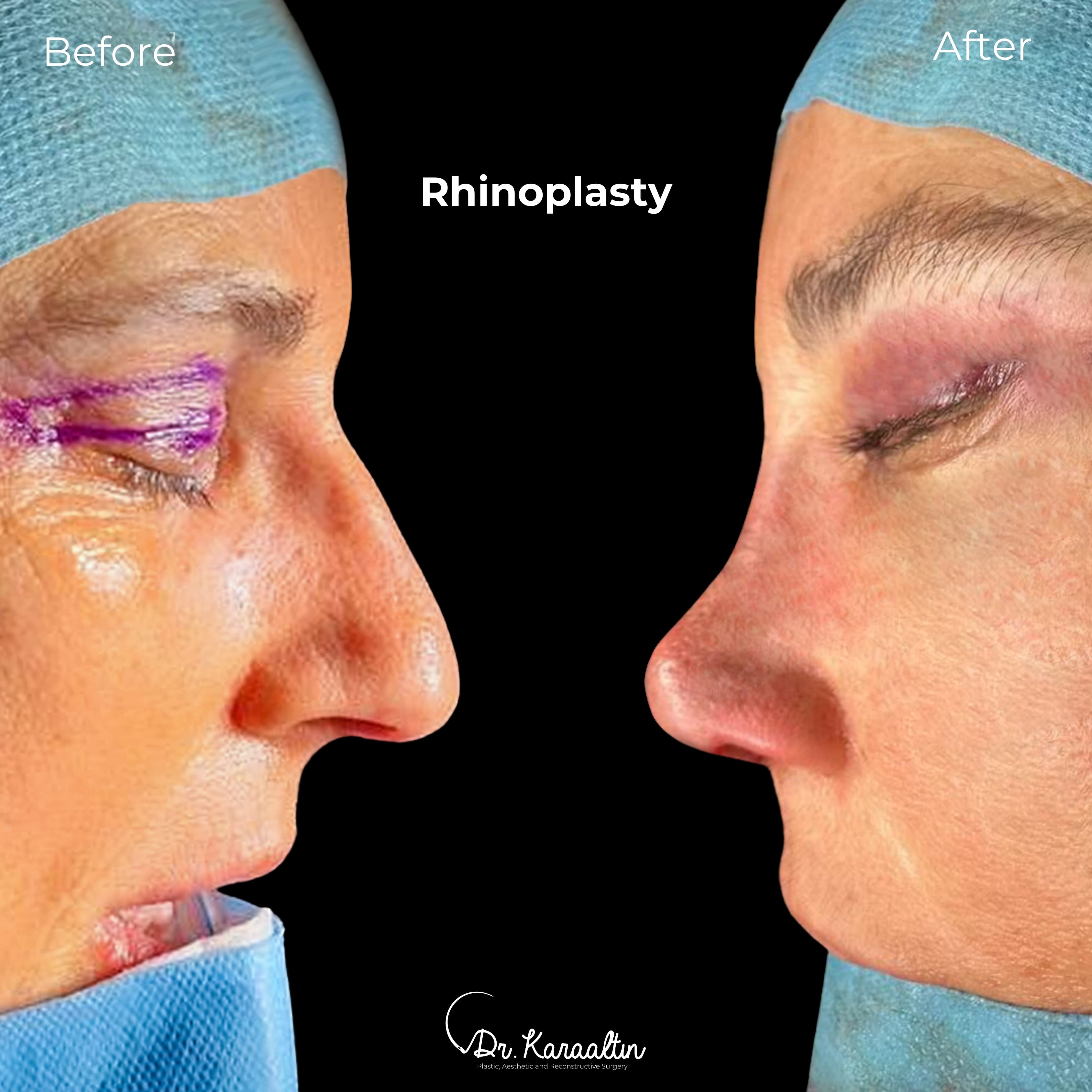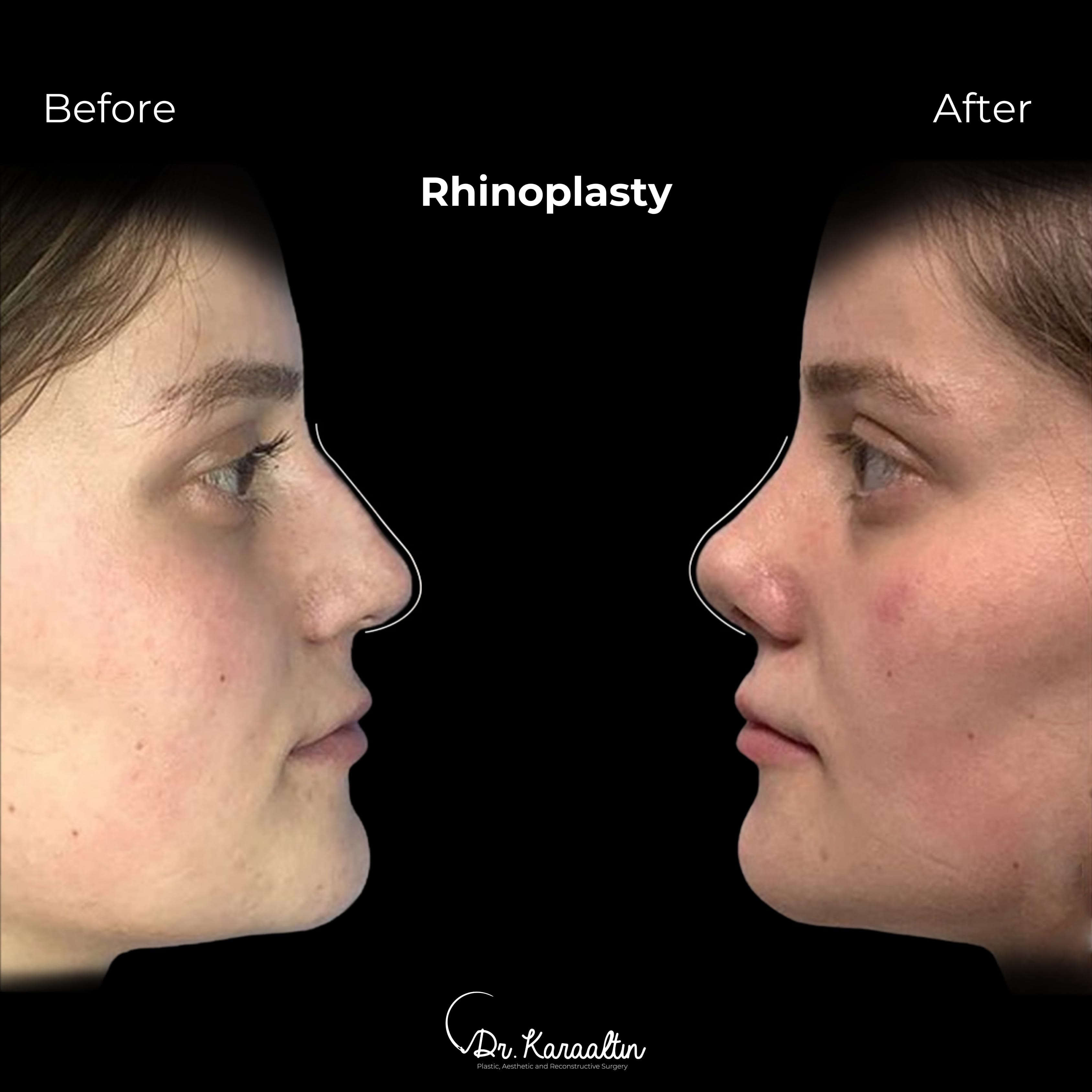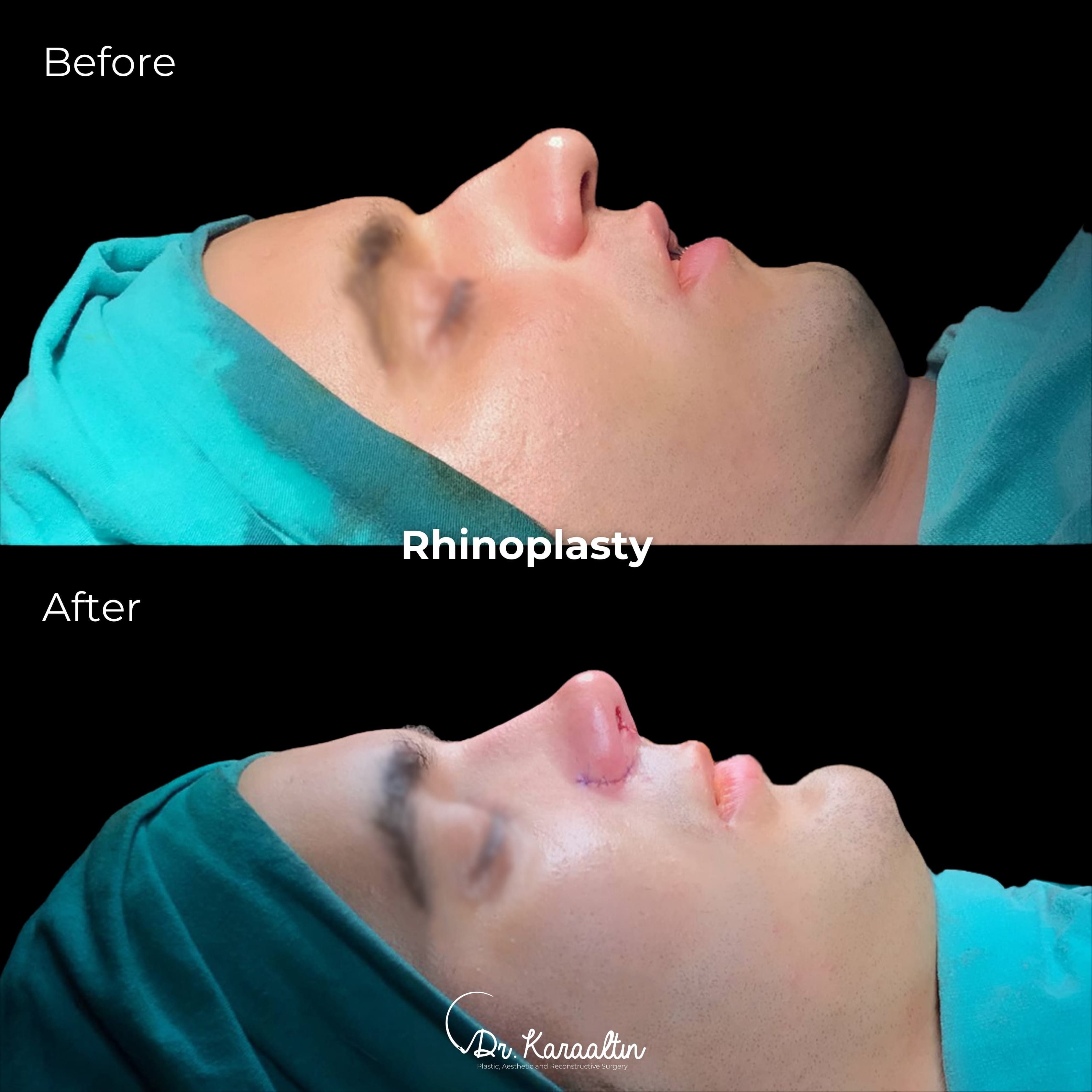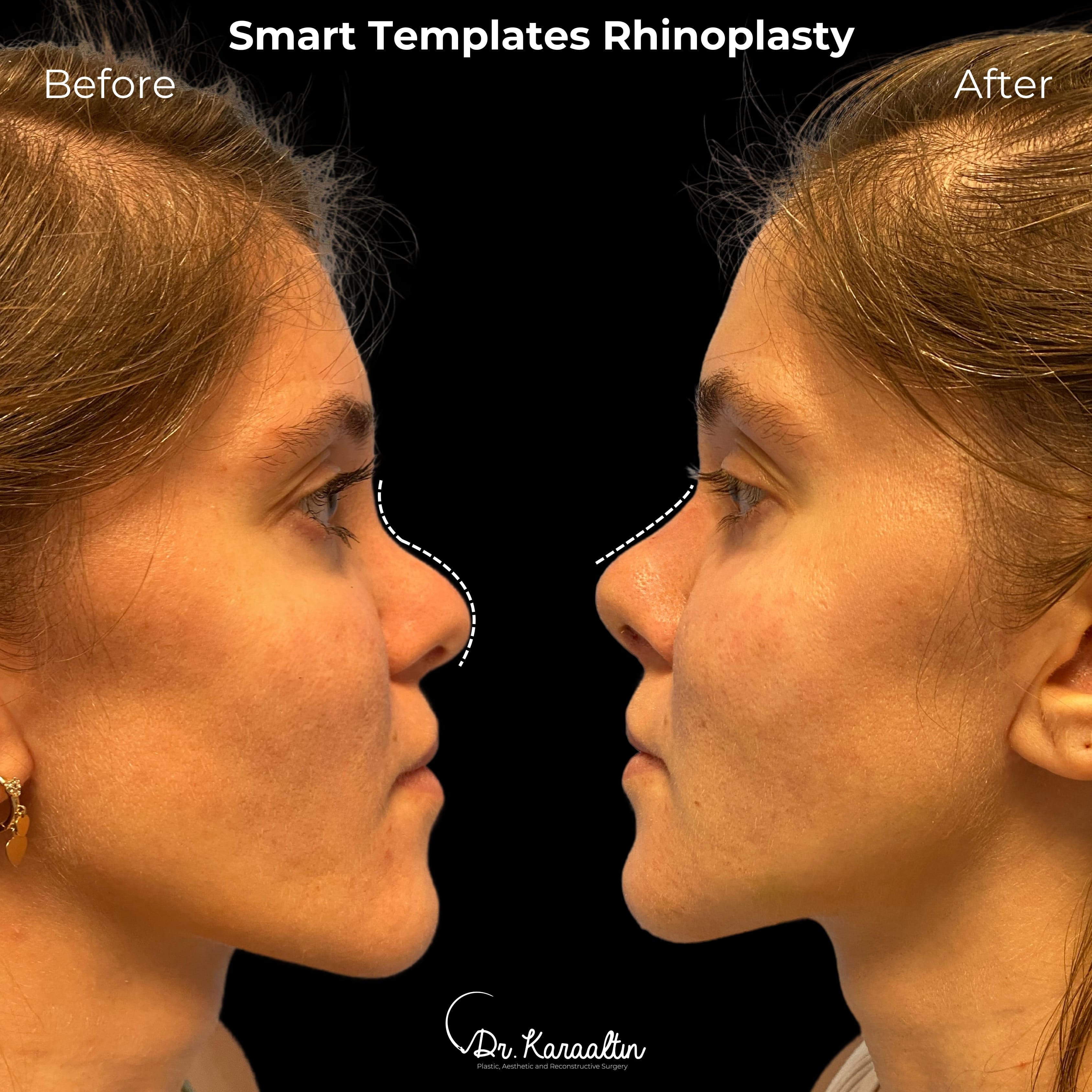
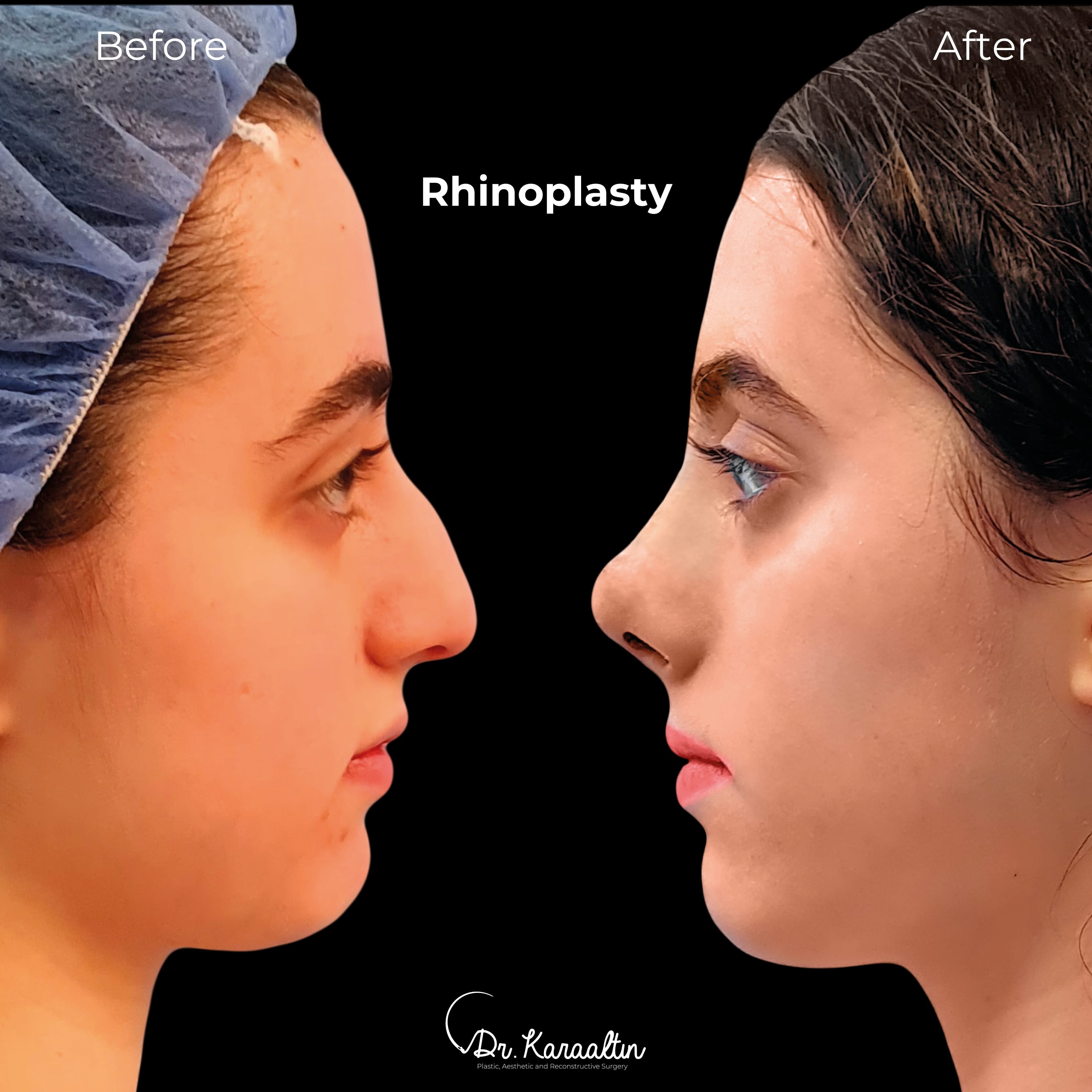
Nose reshaping (rhinoplasty or a “nose job”) is a procedure to alter the shape or size of the nose. At Dr. Karaaltın Clinic in Istanbul, we have the privilege of offering the widest range of nose job techniques to our patients. Istanbul is one of the cities in the world where rhinoplasty is performed the most.
Preservation rhinoplasty is a nose-modification surgery that aims to preserve and under- manipulate as much of a patient’s original tissue as possible. It requires advanced technique, whereby the surgeon changes the shape of the nose by navigating to the designated areas to be removed. Using specially designed instruments bone and cartilage are scarved to the desired shape without disrupting the mainframe work of the nose. Although the procedure is unique, it should be taken into consideration that not all patients are suitable candidates for it. The basic advantage of the procedure is the need for revision procedures is far less likely. It can be applied in a hybrid manner, both open and closed approaches can be utilized to aim the natural look.
The choice of primary rhinoplasty technique is based on preoperative diagnosis, external nasal contour, nasal anatomy, and expected changes in nasal contour. Many of these patients require minimal nasal tip work and will do well with a conservative cephalic trim or may require no cephalic trim. Patients with an asymmetrical or wide (bulbous) nasal tip, with a wide inter-domal distance, are good candidates for a delivery approach or the external rhinoplasty approach. The basic concept of structural rhinoplasty is to anticipate long-term changes in rhinoplasty that occur because of the prolonged forces of the scar contracture the forces of scar contracture. Structural grafts can create deformity; therefore, selective use and proper execution are critical to maximizing the aesthetic and functional out-come in rhinoplasty.
Closed rhinoplasty is also called endonasal rhinoplasty, and any incisions and reshaping are done within the nostrils. The method requires extra surgical skills to approach the nasal structures and some of the surgical steps should be performed with sentimental thinking and haptic sense. Special designed hardware’s are deployed to perform the approach.
The open rhinoplasty technique is used to correct both the cosmetic and functional deficits of the nose using an external inscion to elevate the skin and expose the internal nasal structures for correction. This technique might have advantages in patients having a revision (Secondary, tertiary) nose procedure.
The piezo technology uses ultrasonic waves to cut, sculpt and shape the nasal bone structures. This technique gives the surgeon the upmost advantage of re-shaping the bone without creating any non- desirable residual bone deformities.
The advances in 3 D printing technology and bio-tissue engineering have evolved drastically in last decade. The technology is used to manufacture custom made dissolvable implants from regular surgical suture material and can be implanted over the altered nasal cartilage framework to provide precision, predictability in controlled healing for a better outcome.
In nasal surgery some surgical steps are done without the aid of direct vision. In these situations, surgeons must use their experience and judgment. By using the video-endo-visional device certain anatomical regions are revealed to the surgeon’s vision during surgery. Hence certain steps like lateral osteotomy (cutting the nasal bone) or dorsal hump resection (removing the hump).
Turbinate reduction improves airflow in people with chronic nasal obstruction. Your surgeon reduces the size of your turbinate’s (small, bony structures inside of your nose) by removing excess tissue or using radiofrequency waves (radiofrequency ablation). Turbinate reduction is usually recommended if nonsurgical treatments don’t solve the issue. The procedure can be combined with a rhinoplasty procedure.
Our noses are designed to filter and warm the air we breathe. The nasal septum runs down the middle of the nose, dividing the bone and cartilage into two compartments. If the septum is deviated, it can dramatically impact the nose’s function. Septal deviation can be caused by genetics or trauma.
For patients with severe septal deviations, medications are usually less effective, and the patient may ultimately require a corrective surgery. A septoplasty or septal reconstruction is a procedure meant to straighten the deviated cartilage within the septum. Septoplasty might be an outpatient procedure that takes approximately 25-45 minutes. In certain circumstances it could be combined with the rhinoplasty procedure.
Functional endoscopic sinus surgery (FESS) is minimally invasive surgery for serious sinus conditions. Healthcare providers use nasal endoscopes — thin tubes with lights and lens — to ease your sinus symptoms without making incisions in or around your nose. Studies show between 80 % and 90% of people who’ve had this surgery feel it solved their sinus issues. This procedure can be combined with a rhinoplasty or septoplasty procedure.


